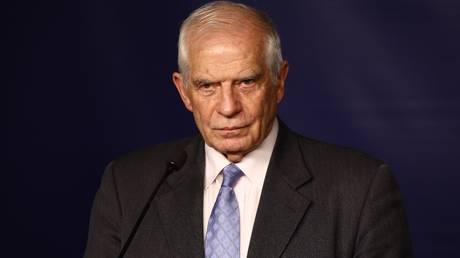ARTICLE AD BOX
Using images from the James Webb Space Telescope (JWST), astronomers have shown that a so-called cosmic crisis, the discrepancy in the expansion rates of the early and modern universe, does exist.
The press service of the James Webb Space Observatory said: “We have looked at the entire set of objects studied by Hubble, and we can now say with a high degree of certainty that discrepancies in the expansion rates of the universe cannot be caused by errors in observations. The possibility remains "The most interesting thing is this: our understanding of the structure of the universe is wrong."
Nobel Prize winner Adam Ries and other astronomers reached this conclusion after studying more than 1,000 variable stars located in 6 galaxies relatively close to us, which recently witnessed Type I nova explosions. Astronomers use these stars and other cosmic events to determine precise distances between Earth and distant space objects.
Rees and other astronomers had already observed these objects using the Hubble Observatory to calculate the expansion rate of the universe, which led to the start of the "cosmic crisis." Scientists re-examined the results of these measurements and calculations using the James Webb Space Observatory, which has much higher accuracy and sensitivity than Hubble.
Her measurements replicated the results obtained in the past by Rees and other astronomers, increased the accuracy of the measurements by a factor of 2.5, and increased the level of statistical confidence to one random error for every four quadrillion attempts. As astronomers explain, this effectively rules out the possibility that Hubble's measurements were incorrect and that the "cosmic crisis" was caused by random coincidences or errors.
Rees and other astronomers hope that confirming the existence of a "cosmic crisis" will attract more attention from astronomers to measurements of the expansion rate of the modern and ancient universe, as well as during the intermediate stages of its evolution, which are still poorly understood. Astronomers concluded that these depths of space will become more easily observed in the coming years thanks to the successful launch of the Euclid orbiting observatory and the imminent launch of the WFIRST telescope into space in May 2027.
It is noteworthy that the so-called "cosmic crisis" arose about seven years ago, when measurements of the expansion rate of the universe were published almost simultaneously, which were obtained as part of observations of the microwave "echo" of the Big Bang using the "Planck" telescope and variable stars in The Milky Way and supernova explosions in neighboring galaxies conducted by the Hubble Observatory. The values they obtained varied greatly.
The second type of observation showed that two galaxies, separated by a distance of about three million light-years, should be moving apart at a speed of about 73 km/s. This value is 9% higher than monitoring data for the so-called “echo” of the Big Bang (67.9 km/s). Subsequently, the existence of these contradictions was confirmed by other methods and tools. These discrepancies have sparked much debate about whether modern cosmological models are correct and whether the properties of the universe have changed during the existence of the universe.
.png)
 8 months ago
4
8 months ago
4









 English (US)
English (US)